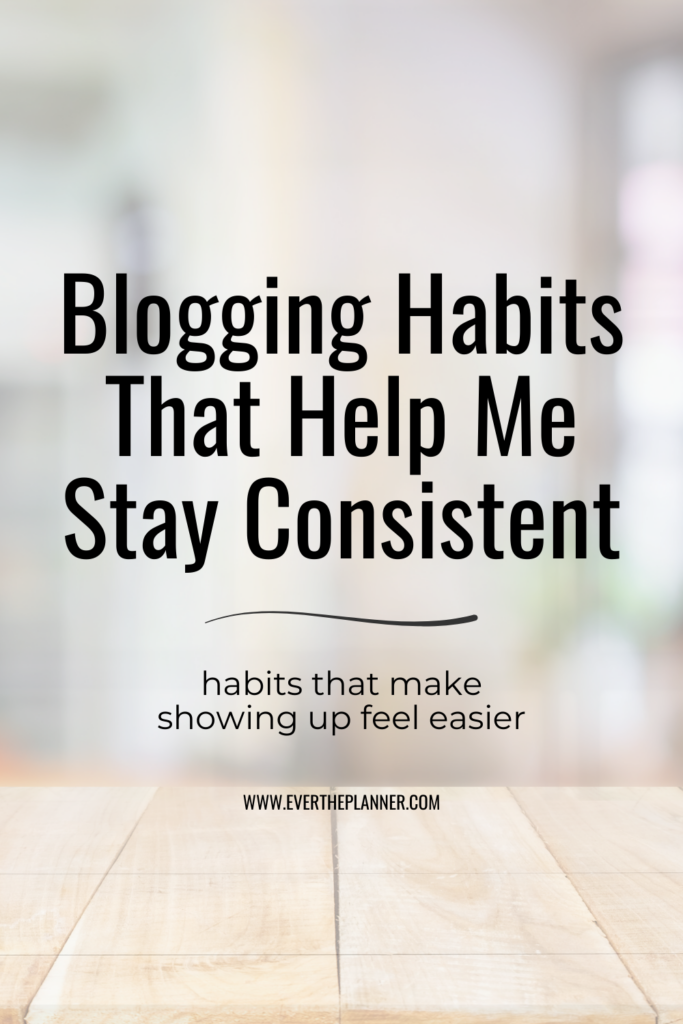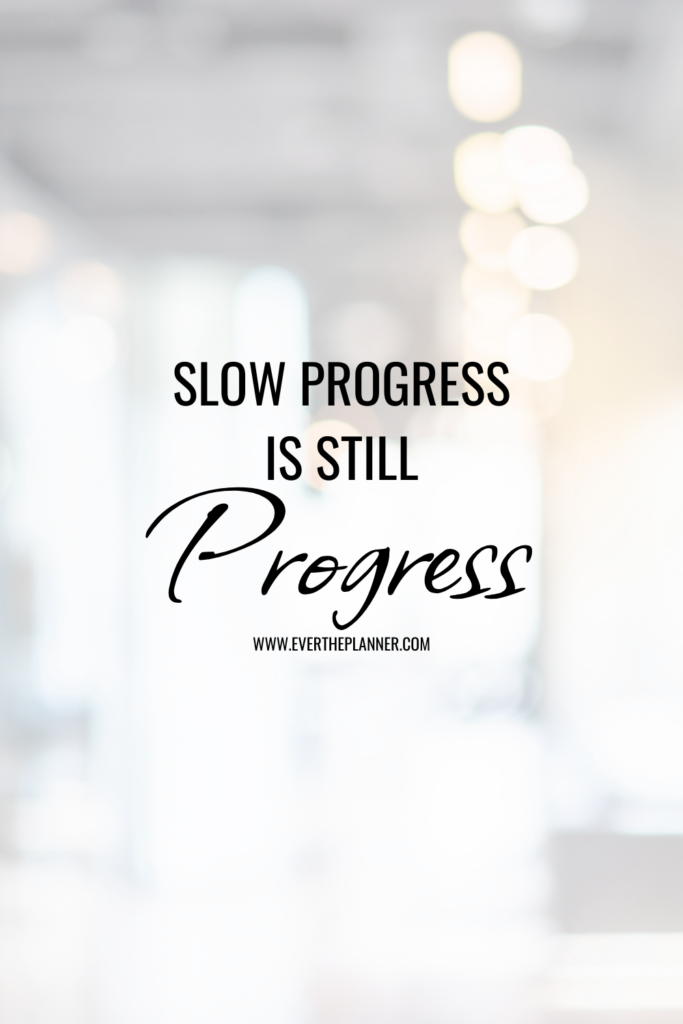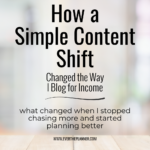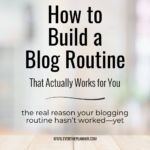Blogging Habits That Help Me Stay Consistent

When I first started blogging, I went all in. I spent two weeks building fast, getting posts out, setting up Pinterest, and creating a real online presence—and honestly, I loved that focused energy. But I knew I couldn’t sprint forever. If I wanted this to last, I had to create a rhythm I could actually sustain. That’s where these blogging habits came in. They helped me shift from overwhelm to consistency—without burning out.
In this post, I’m sharing the exact habits that help me blog consistently—the ones I still come back to when things feel wobbly. If you’re struggling to find your flow, I hope these give you a starting point that actually feels doable.
TL;DR:
Consistency is tough when you’re just starting out—but a few simple blogging habits made it easier for me to show up regularly. These beginner-friendly habits are flexible, realistic, and designed to help you blog without burning out.
Why It’s So Important to Stay Consistent With Blogging
When you’re starting a blog, staying consistent can feel like a personal challenge—but it’s also a technical one.
Consistency isn’t just about building discipline or checking off tasks.
It’s about creating enough signals over time so platforms like Google and Pinterest can start to recognize you, understand your content, and trust that you’re a source worth sharing.
Search engines and algorithms rely on patterns. They don’t just notice what you post—they notice how often you post, how fresh your content is, and whether or not you show up over time. When you publish regularly, you’re teaching these platforms that your site is alive, active, and growing. That trust builds momentum—and that momentum helps your content reach more people.
Your readers are the same way. When someone finds your blog and sees that you’ve shown up more than once—and recently—it builds credibility. They start to believe you’re someone they can come back to, someone who’s going to keep sharing value. It’s a quiet kind of trust, but it matters.
Consistency is super important, but it doesn’t mean you need to be putting up fresh posts every day or multiple times a week. You don’t even have to post a new article every week.
You just need a rhythm you can stick with—one that gives your blog room to grow while giving you enough space to breathe.
When you’re sitting down and creating your rhythm and your content plan, take into consideration what you feel like you’ll be able to consistently produce. One post a week or two? Maybe, with all of life going on, you can only commit to one post each month.
That’s okay.
Choose your rhythm and stick to it.
Next, we’ll break down what blogging habits you’ll need so that we can take the pressure off your brain.
Decision fatigue is so real, so instead of sitting down and wondering where to start, you already have a direction and a plan—and that makes it so much easier to keep going, especially on the hard days.
I have days where I feel very directionless, and it’s on those days I rely very heavily on the habits and rhythms I’ve already established. I’m giving you my personal habit stack below.
If you need help getting clear on what to post and when, grab my free workbook Content Clarity. It’ll help you plan smarter so you can stay consistent—even on your busiest weeks.
Blogging Habits That Help Me Stay Consistent
These are the simple blogging habits I come back to again and again — not because I always get them perfect, but because they give me a rhythm. They help me keep showing up, even on low-energy days.
1. I Keep a List of Blog Post Ideas So I Always Know What’s Next
Instead of starting from scratch every time I sit down to write, I keep a running list of blog post ideas I can pull from.
I usually plan posts about 1–2 weeks in advance so I always know what I’m working on next.
It’s one of the easiest ways I’ve found to stay consistent because I don’t have to start from square zero every time I sit down.
2. I Follow a Simple Content Calendar With Set Work Blocks
One of the biggest ways I stay consistent is by sticking to my content calendar.
I publish two blog posts each week, and I don’t just hope it happens—I plan exactly when I’m going to work on each one. I block out time in advance for outlining, writing, editing, formatting, and pin creation. It keeps things from piling up and helps me avoid that last-minute scramble.
When I know what I’m working on—and when—I’m way more likely to actually get it done.
This habit is truly my crutch for days when I feel like I’m spinning my wheels, because this is the one blogging habit that always moves the needle.
3. I Use Trello to Keep My Blogging Routine on Track
Each blog post gets its own Trello card, and inside that card is my step-by-step checklist.
That way, even if I get interrupted (which happens a lot), I can pick up exactly where I left off without second-guessing what’s next or what’s left to do.
4. I Start Each Day With a Clear Plan for My Blog Tasks
I take a few quiet minutes at the start of the day to map out what I want to get done—even if it’s just one small blogging task.
That intentional start keeps me focused and helps me build momentum.
I always refer to my content calendar to know what my “big task” for the day is going to be, and then supplement with smaller tasks depending on my available time for that day.
Now, this next part is important:
When I complete my task list, I am done for the day.
If you’re anything like me, you can spend hours spiraling because you feel like you “haven’t done enough,” so I need you to remember that when you’ve completed that list, you have done enough.
It’s time to rest, reset, and let tomorrow worry about itself.
Setting up a blog or an online business is not a sprint. You are most likely not going to go viral tomorrow, so take the time you need in order to stay in a good state of mind.
5. I Use Past Posts to Spark New Blog Content Ideas
Every week, I take a few minutes to look back at posts I’ve already written.
I often find hidden ideas I didn’t fully explore, or I’ll notice a topic that deserves its own follow-up post.
It’s a gentle, low-effort way to keep my content bank full.
6. I Celebrate Small Wins to Stay Motivated and Consistent
Some days, all I do is format a post or create a small batch of pins.
That still counts.
I’ve learned that small progress is still progress—and over time, those little wins add up to real growth.
If you will show up, things will happen.
So, on the hard days, show up for the 5-minute pinning session or the 10-minute formatting session.
Sometimes that will be enough to clear the fog and spur you into an amazingly productive session.
Sometimes it will make you want to poke your eyeballs out.
So do the small task and then be finished.
That leads us to our last point…
7. I Leave Room for Flexibility to Help Me Stay Consistent With Blogging
I try to keep my blogging schedule flexible enough that I can move things around if life happens.
If I miss a day or even a week, I don’t force a full reset—I just pick back up where I am and keep going.
There are going to be days when you can knock out a week’s worth of content, and days when you can barely open your laptop.
Keep enough flexibility in your schedule that you can move tasks around if you need to.

What to Do When You Struggle to Blog Consistently
Let’s be honest—there will be weeks when consistency feels impossible. Maybe life throws you a curveball. Maybe you’re just tired, or feel completely stuck. I’ve been there too.
But struggling doesn’t mean you’ve failed.
It just means you’re human—and building something that matters takes time.
Here’s what I’ve found helps when I hit a rough patch:
- Don’t try to “catch up”—just start again.
You don’t need to recreate the schedule you missed or force yourself to publish three posts in a week. Just pick one small task and move forward from where you are. - Revisit your content plan.
Sometimes the block comes from not knowing what to post. I like to revisit my blog post idea bank and pick something I feel curious or excited about—it helps me ease back in. - Use your blogging habits as anchors, not pressure.
Go back to one simple habit—like checking your Trello board, opening a draft, or outlining a post. Even if you don’t publish that week, that small habit can help you reconnect with your rhythm. - Give yourself grace.
Missing a week doesn’t erase your progress. You’re allowed to take breaks and still be a real blogger. What matters is that you come back—and that you do it in a way that supports you, not drains you.
The last few days have been tough on me. I haven’t seen the growth I’ve wanted to see and it can be disheartening when things are moving slow.
But the fact is, things are still moving.
And if you keep showing up, they will keep moving.
Slow progress is still progress.

Final Thoughts: You Can Be a Consistent Blogger, Too
Blogging consistently doesn’t mean never missing a week or always having it all together.
It means building a rhythm you can return to—even when things get messy. It’s about showing up more often than not, and letting your small blogging habits carry you forward when motivation runs low.
Pick one habit from this list that feels doable this week. Just one. Let it anchor you. You don’t need to overhaul everything overnight—you just need a little momentum.
And if you want a little extra support planning ahead, grab my free workbook Content Clarity. It’ll help you map out what to post and when, so you can blog with more confidence and less overwhelm.





Be the first to comment